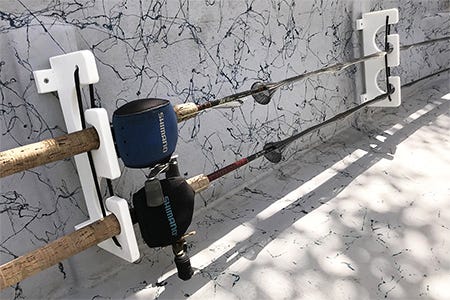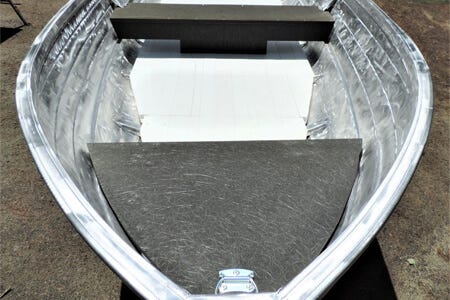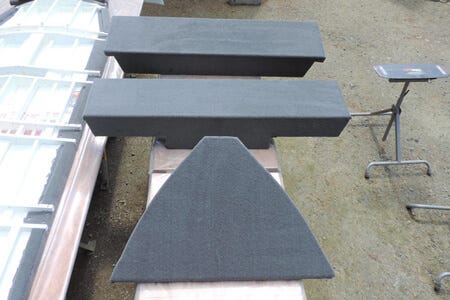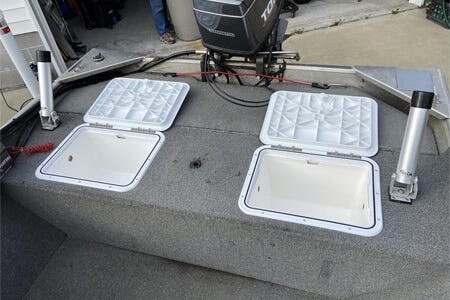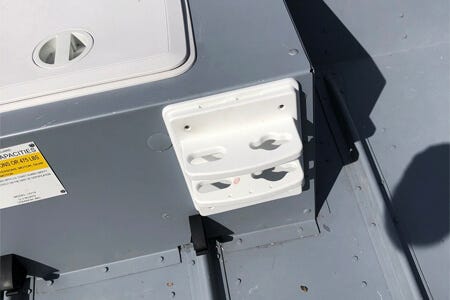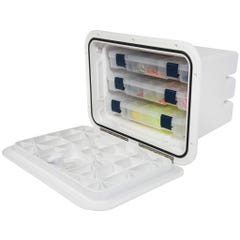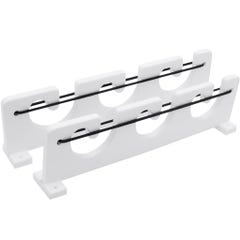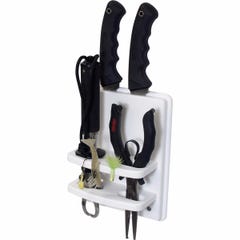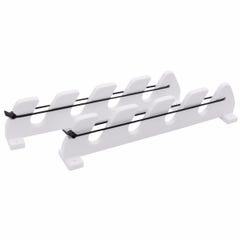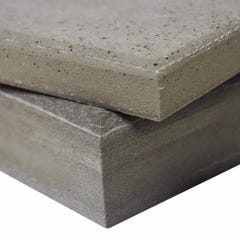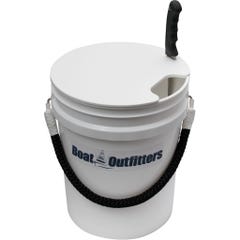3 Upgrades to Turn Your Jon Boat Into a Fishing Boat
May 13, 2022 5 min read


Good old aluminum jon boats actually have a lot going for them as fishing platforms. They’re stable, tough, roomy, shallow drafting, fuel-efficient, inexpensive, and easy to transport and handle.
Contents
Crafting Your Perfect Jon Boat
If you’re a do-it-yourselfer, they also beg to be modified. Unlike other fishing boats, which leave the factory with all kinds of fishing features baked in, jon boats are blank canvases, ready to be built out to meet your specific needs. The only limits are your imagination and your budget.
Keep in mind, though, that you can modify and accessorize simple craft like jon boats so much that you defeat their purpose. Part of the appeal of jons, canoes, kayaks and other small boats is that they’re simple, lightweight and inexpensive to own and operate. Don’t try to turn them into something they’re not.
Here are a few suggestions for making your jon boat fishier without ruining its essential jon-ness.
1. Add Fishing Rod Storage
You can always lay a bundle of rods across a thwart, but that’s asking for trouble. Best case, they’ll take up room in the boat that could be used for other things and then be tangled together when you try to grab one. Worst case, somebody will step or sit on them.
Horizontal Rod Storage
Instead, add dedicated vertical and/or horizontal rod storage to keep your rods out of the way, easy to grab and safe from damage. In larger jon boats, there may be room for horizontal rod holders, which are also useful for storing stake anchors, deck brushes, telescoping push poles, and more. If space is at a premium, fold-away options, like our Folding 2 Rod Load-N-Lock Gunwale Mount Rod Holder , are ideal.
Add dedicated vertical and/or horizontal rod storage to keep your rods out of the way, easy to grab and safe from damage.
Vertical Rod Storage
Vertical rod storage can be added almost anywhere; the vertical faces of thwarts work particularly well for rod racks holding two to four rods. Our single-rod tubes offer even more mounting flexibility. If possible, mount vertical rod holders close to either the bow or stern so the stored rods won’t get in the way of moving around the boat. The inside of the transom is also a good option.
2. Build a Casting Deck
A raised bow casting deck adds a huge degree of fishability to any jon. It provides better footing than either balancing on a thwart or standing on a ribbed floor; it improves visibility; it gives you a place to install a bow-mount trolling motor; and it creates storage underneath for an anchor, trolling motor batteries, etc.
First Things, First
Every boat is different, so there isn’t a one-size-fits-all design or procedure. In a nutshell, you’ll start by deciding how long you want your deck, how high you want it in relation to your gunwales, and whether to leave the aft end open or enclose it partially or completely with a bulkhead.
You’ll need to determine how to attach the deck to your hull sides and what kind of frame is needed to support it.
Based on those decisions, you’ll need to determine how to attach the deck to your hull sides and what kind of frame is needed to support it. Smaller decks may require nothing more than stiffeners attached to the underside. Others may require vertical supports. Still, others may be able to rest on top of existing small front decks or thwarts.
Material and Structure
The goal is to keep the deck and frame as light as possible without compromising strength. Most aluminum jon boats are so lightweight that adding significant weight above the waterline can affect not just fuel efficiency and handling but also stability. So think carefully about materials and design.
The goal is to keep the deck and frame as light as possible without compromising strength.
Frames are commonly made from 2” x 2” wood — preferably a marine-friendly softwood like Douglas fir, which is available at most general hardware stores and lumber yards — or 1/8” x 2” aluminum angle stock.
Common Materials
Garden variety 3/8” or 1/2” plywood is the most popular material for decking and bulkheads and works fine for most applications. The drawbacks are its weight and, of course, its propensity to absorb water and to rot. At the very least, plywood should be carefully coated with epoxy. Better yet, it should be encapsulated in fiberglass, but this adds still more weight.
Honeycomb coring like NidaCore is the lightest option but obviously also must be glassed for rigidity. Honeycomb is more expensive than plywood — around $400 for a 4’ x 8’ sheet pre-glassed — and has the added drawback of the exposed honeycomb structure along edges, which can be an issue of you don’t plan to permanently attach the edges of your deck to you hull sides.
Coosa Composite Panels, while costly at around $500 for a 4’ x 8’ sheet, provide perhaps the best combination of strength and lightweight. Coosa doesn’t absorb water like wood and never rots, plus it’s inherently rigid and strong, unlike honeycomb. Although it’s often glassed for added rigidity, it doesn’t need to be encapsulated to protect against water intrusion.
Final Touches
Decks can be finished with almost anything — gel coat with nonskid, Tuff Coat, spray-on truck bed liner, marine carpet, or stick-on EVA foam sheets. Aesthetics, durability, ease of cleaning, and, of course, budget will determine the best option.
3. Install Tackle and Gear Storage
Most jon boats are built with precisely zero enclosed storage. Tackle and gear goes on the floor between the thwarts, where it’s in the way and tends to get wet. Same with anchors, dock lines, PFDs, and everything else.
One obvious place to add storage is inside metal thwarts. To create bulk storage for PFDs, gear bags, etc, simply add an access door or hatch in the side or top of the thwart. These can range from relatively inexpensive plastic doors to custom-fit Starboard hatches with aluminum frames.
NOTE: The thwarts on many jons are partially or completely filled with flotation foam. We don’t recommend removing foam.
Dedicated tackle storage can also be added inside thwarts. A wide variety of tackle compartments designed to hold Plano-style trays can be mounted into the vertical sides of the thwarts. At a little under 11” tall, our Black Acrylic Door Tackle Box with 3 Plano Trays fits well on many jons. Requiring a bit more vertical room but less depth, tilt-out boxes are another option.
Surface-Mount Storage
If you don’t have the stomach for cutting big holes in your thwarts — or if they’re chock full of foam — consider surface-mount storage. A huge variety of tool holders like our popular Two Knife, Pliers, and Lure Holder can be screwed to any vertical surface, while tackle trays designed for various sizes and quantities of Plano boxes can be mounted on either vertical or horizontal surfaces.

